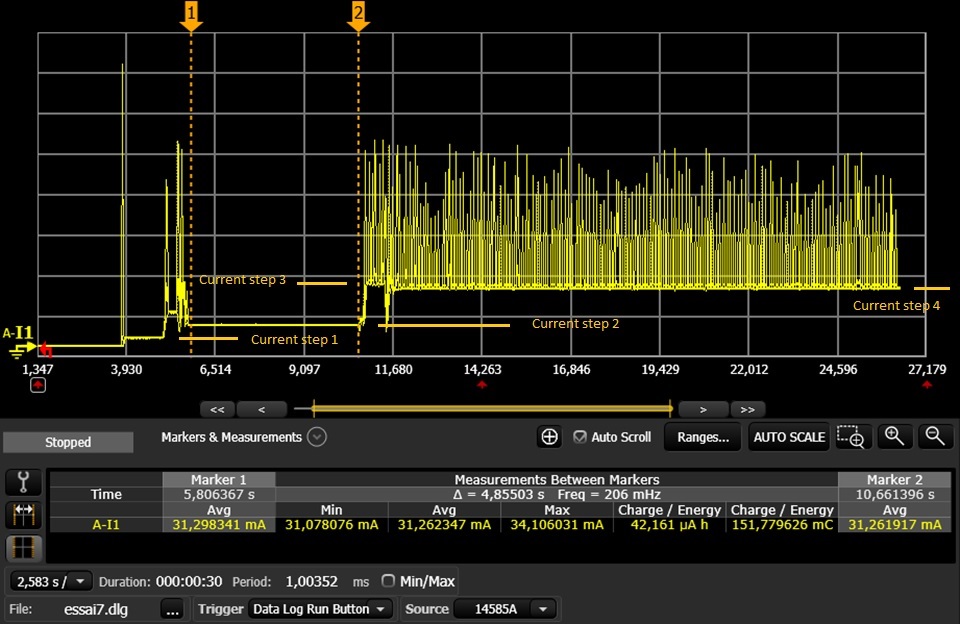Part Number: CC3220
Hi CC3220 champs,
We performed a first current measure on the CC3220SF LP using the out of box example – and we were surprised to see consumption peaks which are much above 25mA as we could expect from the datasheet just after boot time.
The first peak for instance we can see in the attached power analyzer snapshot is about 450mA which sounds to correspond to a peak calibration current.
By performing such measurements we like to understand and define the max instantaneous current (not average) which is consumed during boot time until first line of code execution since the current source which is used for the first 4 minutes after boot time is very limited.
Questions :
Q1 : What are the here below current big peaks correspond to (the ones above 200mA)? Specially the first one above 450mA? Is it expected?
Q2 : What the different current steps (1/2/3/4) here below correspond to?
Q3 : Could you share any use case current consumption figures like commissioning, pairing, …. For the CC3220SF? Any additional information versus Datasheet about consumption is welcome. As you understand, the power consumption evaluation is key in this application
Q4 : When calibration happens in practice (I read the DS no need to copy/paste)? What frequency? Is it just about boot up and then when temperature varies?
Thank you!
Best regards,
Guillaume



